The NVIDIA GeForce RTX 2060 6GB Founders Edition Review: Not Quite Mainstream
by Nate Oh on January 7, 2019 9:00 AM ESTCompute & Synthetics
Shifting gears, we'll look at the compute and synthetic aspects of the RTX 2060 (6GB). As a cut-down configuration of the TU106 GPU found in the RTX 2070, we should expect a similar progression in results.
Starting off with GEMM tests, the RTX 2070's tensor cores are pulled into action with half-precision matrix multiplication, though using binaries originally compiled for Volta. Because Turing is backwards compatible and in the same compute capability family as Volta (sm_75 compared to Volta's sm_70), the benchmark continues to work out-of-the-box, though without any particular Turing optimizations.
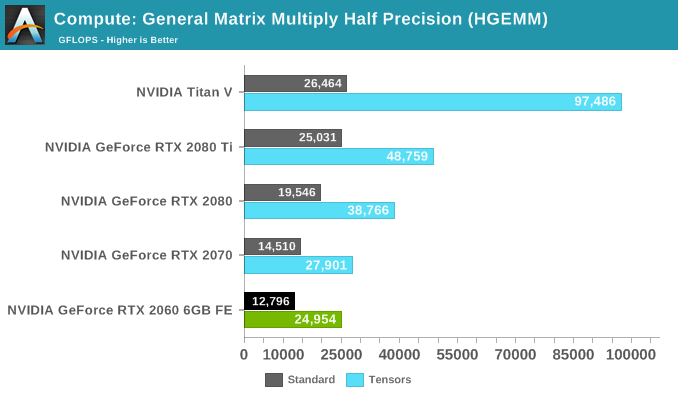
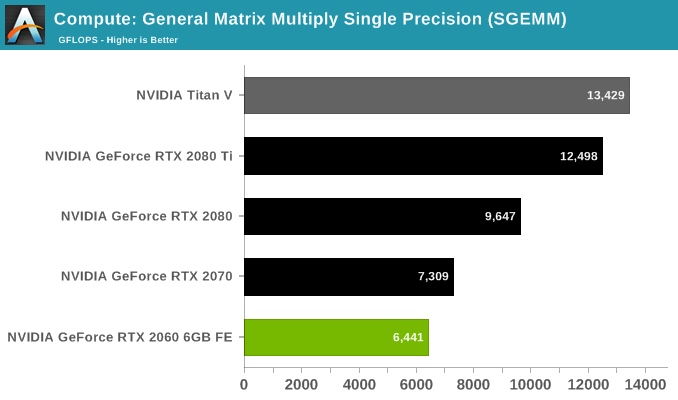
For Turing-based GeForce, FP32 accumulation on tensors is capped at half-speed, thus resulting in the observed halved performance. Aside from product segmentation, that higher-precision mode is primarily for deep learning training purposes, something that GeForce cards wouldn't be doing in games or consumer tasks.
Moving on, we have CompuBench 2.0, the latest iteration of Kishonti's GPU compute benchmark suite offers a wide array of different practical compute workloads, and we’ve decided to focus on level set segmentation, optical flow modeling, and N-Body physics simulations.
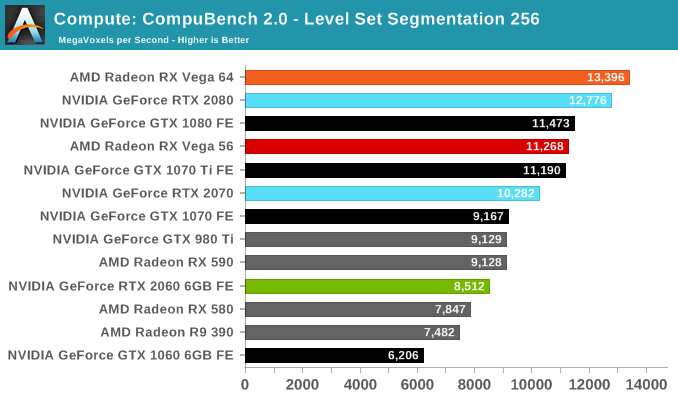
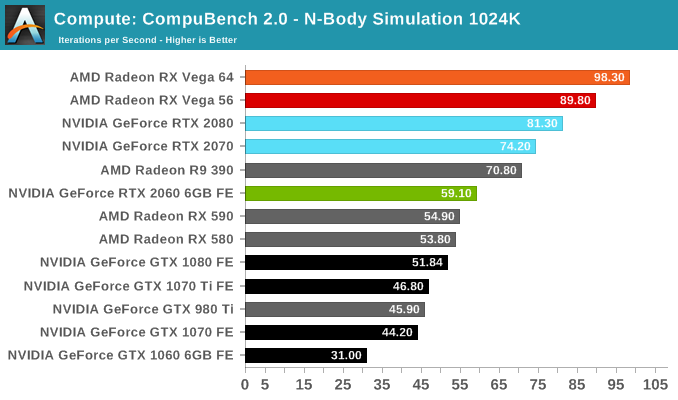
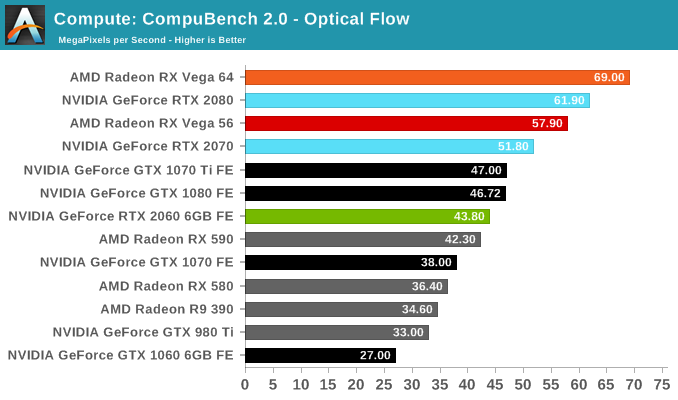
Moving on, we'll also look at single precision floating point performance with FAHBench, the official Folding @ Home benchmark. Folding @ Home is the popular Stanford-backed research and distributed computing initiative that has work distributed to millions of volunteer computers over the internet, each of which is responsible for a tiny slice of a protein folding simulation. FAHBench can test both single precision and double precision floating point performance, with single precision being the most useful metric for most consumer cards due to their low double precision performance.
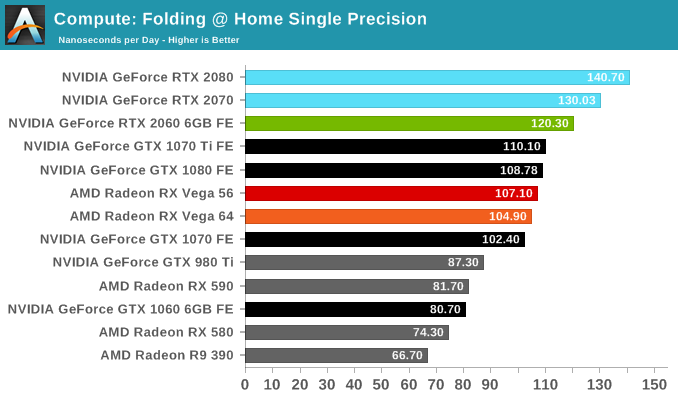
Next is Geekbench 4's GPU compute suite. A multi-faceted test suite, Geekbench 4 runs seven different GPU sub-tests, ranging from face detection to FFTs, and then averages out their scores via their geometric mean. As a result Geekbench 4 isn't testing any one workload, but rather is an average of many different basic workloads.
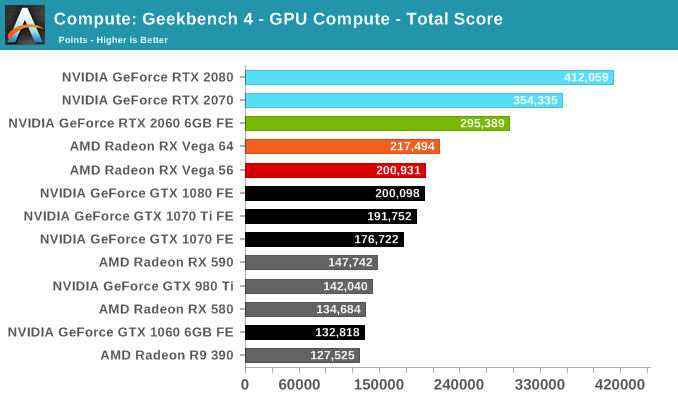
We'll also take a quick look at tessellation performance.
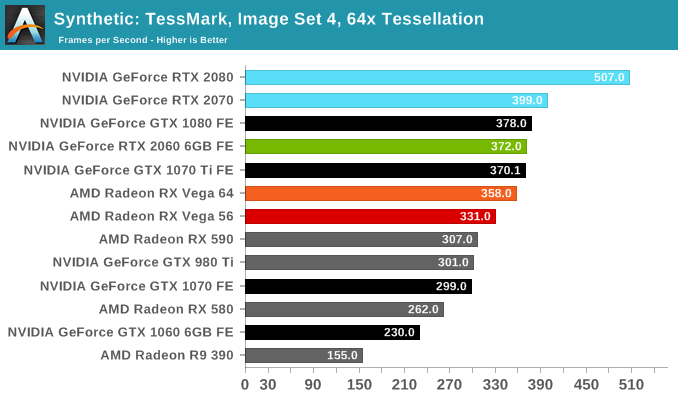
Finally, for looking at texel and pixel fillrate, we have the Beyond3D Test Suite. This test offers a slew of additional tests – many of which use behind the scenes or in our earlier architectural analysis – but for now we’ll stick to simple pixel and texel fillrates.
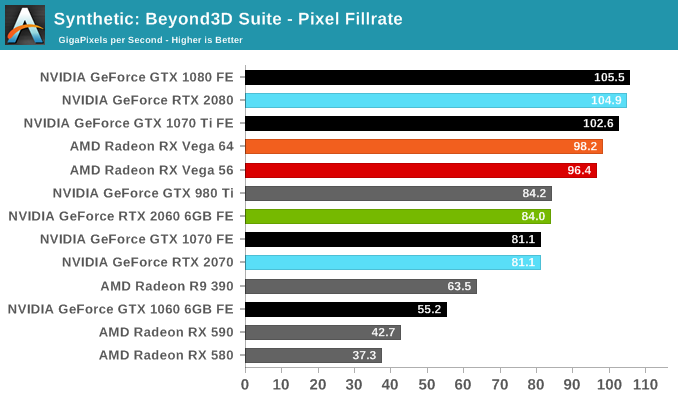
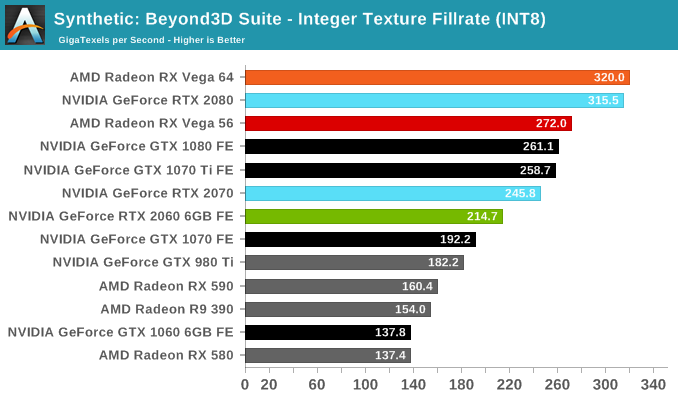










134 Comments
View All Comments
richough3 - Tuesday, January 8, 2019 - link
I would wait a few generations before I would purchase a video card for it's ray tracing abilities. The main reason I would buy any high end card is for FPS, because in competitive gaming, FPS is king, so any visual quality feature would be at minimum setting or turned off anyway.nunya112 - Tuesday, January 8, 2019 - link
AMD is about to have its best year for video cards mark my words!NVidia have launched a product that while on paper and technology wise is awesome. however. the physical hardware Is not capable to use that technology. im referring to RTX its too slow. And NV is asking a premium for it. NVidia has made AMD's job very easy.
all AMD hasto do is. provide good cards MUCH CHEAPER and they will own at least 50% of GPU market.
webdoctors - Tuesday, January 8, 2019 - link
Yo how much do you get paid to post? Can I do it too from home? We can split the referral bonus. Make me an offer, could use quick cash.nunya112 - Tuesday, January 8, 2019 - link
I bought a 580 8gb for 199 Australian just before Xmas. was because they all had excess supply again from all the miners. well we all know what happened there! It crashed faster than a meth head would on sunday afternoon after being up for 3 days. and they all had ROOMS full of video cards. knowing one of the bigger etailers boss personally. they had so much excess stock. they were going to throw out low end cards because they didnt have room for more expensive products in the warehouse! for instance they had 6 pallets of of gigabyte aurorus 580's and the next day 590's were being delivered. luckily when they dropped to $199AU a lot of ppl picked them up. they still made a profit.moral here is AMD needs to compete with NV for nothing. set their own low prices that they still make 15% on and spank NV
Sherlock - Tuesday, January 8, 2019 - link
Couple of points :1) Nvidia's strategy - which seems to have backfired - was to hope that RayTracing will take off in a big way - and put all its eggs in that basket. Nvidia added in specialized hardware to support RT, which has effectively priced it out of the mainstream market and has to add in "features" like DLSS to convince the consumer that they are getting a good deal @ $350 for what is essentially a 1080p class GPU - equivalent performance from the "traditional" GPU's is available ~$200
2) RayTracing will not take off until it is supported on the XBox and PS as a majority of the games are developed with those platforms in mind. Considering AMD is rumored (confirmed??) to supply the CPU/GPU for the next-gen consoles - unless AMD starts supporting RayTracing this gen - Nvidia has essentially wasted hardware resources and consumer money on something that is completely useless. By the time we have software that uses RT in a meaningful way - these Nvidia cards will be redundant
nunya112 - Wednesday, January 9, 2019 - link
it wont take off because the current hardware can not run it very well. its good on paper, and great to show. but this should have been released next year with a faster chip. because when RTX is on FPS hits so low.CiccioB - Wednesday, January 9, 2019 - link
Next year, with the right HW, nvidia wll have all developers ready to create optimized RT games (unlike BF5). You just look a the finger, not what it it point at.And if the weapon in AMD hands is slowing the technological progress because they have the monopoly in the console market, well, let me say it, I hope that AMD will die soon.
saiga6360 - Wednesday, January 9, 2019 - link
Foolish. If you think nvidia can bring ray tracing to the masses by its lonesome, then you are dreaming. They have to charge you hundreds and thousands just for that finger as you call it, that must be the middle finger because it's not going to get the point across. Just for anything to become a standard, be it 2K, 4K, adaptive sync, it needs to be affordable and for that to happen AMD and Intel needs to get on board.808Hilo - Friday, January 11, 2019 - link
Nvidia marketing fantasy to counter another nonsensical product...580. Just build one top card and sell many. Then build another one. As it seems we are stuck on 1080 performance four years in a row. Lame.Ravenmaster - Saturday, January 12, 2019 - link
It's a 1070Ti